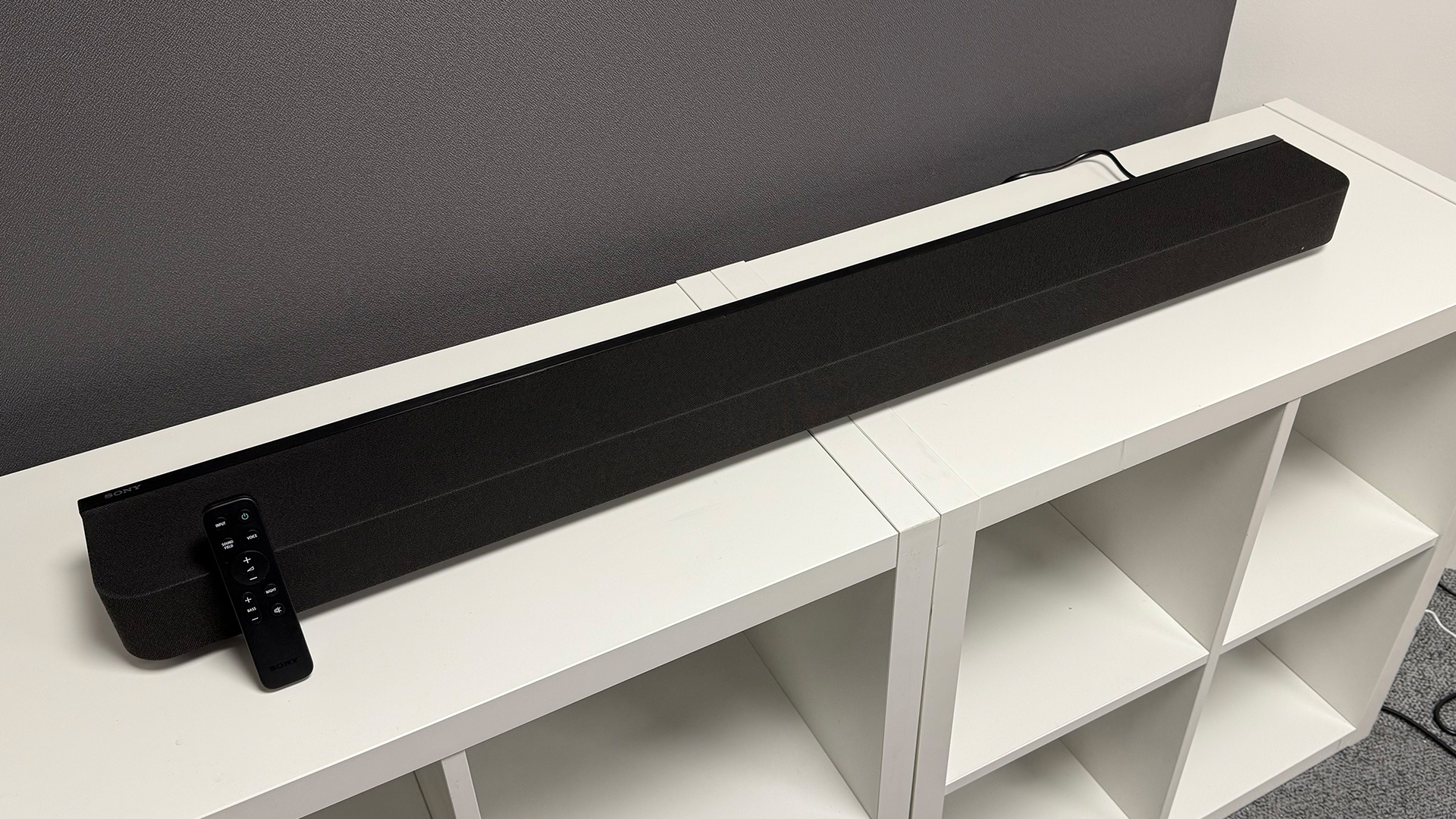
Connections: 1 x HDMI 2.1 in, HDMI out, wi-fi
ARC/eARC: eARC
Bluetooth: Yes
Dimensions (hwd): 6.4 x 110 x 11 cm
Weight: 4.7kg
Far from being the cut-price, compact version of the excellent Bar 9 we were hoping for, the Bravia Theatre Bar 8 is surprisingly sonically compromised and a fair way short of the best soundbars in its price range
For
- Sound has plenty of detail
- HDMI passthrough with 4K/120Hz support
- Excellent companion app
Against
- Lack of large- and small-scale dynamics
- Doesn’t fill the room as well as the best
- Recessed dialogue and vocals
Connections: HDMI out, optical, ethernet
ARC/eARC: eARC
Bluetooth: Yes
Dimensions (hwd): 7.5 x 118 x 11 cm
Weight: 5.9kg
A real step on from the Award-winning Arc, the Arc Ultra packs more drivers, more bass and a more detailed sound than its predecessor. The lack of HDMI passthrough will be a problem for some, but in sound terms there is no better option at this price
For
- Clean, precise, spacious and three-dimensional sound
- Deep, tuneful and expressive bass
- Terrifically detailed for a soundbar
Against
- No HDMI passthrough
- No DTS support
- Still some app issues
It’s no secret that we often recommend one of the best soundbars to anyone who wants to take their TV audio even half seriously. Even the very best, most premium TVs can’t match the experience offered by a dedicated soundbar setup.
With that in mind, we’re comparing two popular choices below – the somewhat clunkily-named Sony Bravia Theatre Bar 8, and the Sonos Arc Ultra. Having thoroughly reviewed both models, you can rest assured that by the time you’re done scrolling through, you’ll have a solid idea of which one deserves your hard-earned cash.
Sony Bravia Theatre Bar 8 vs Sonos Arc Ultra: price
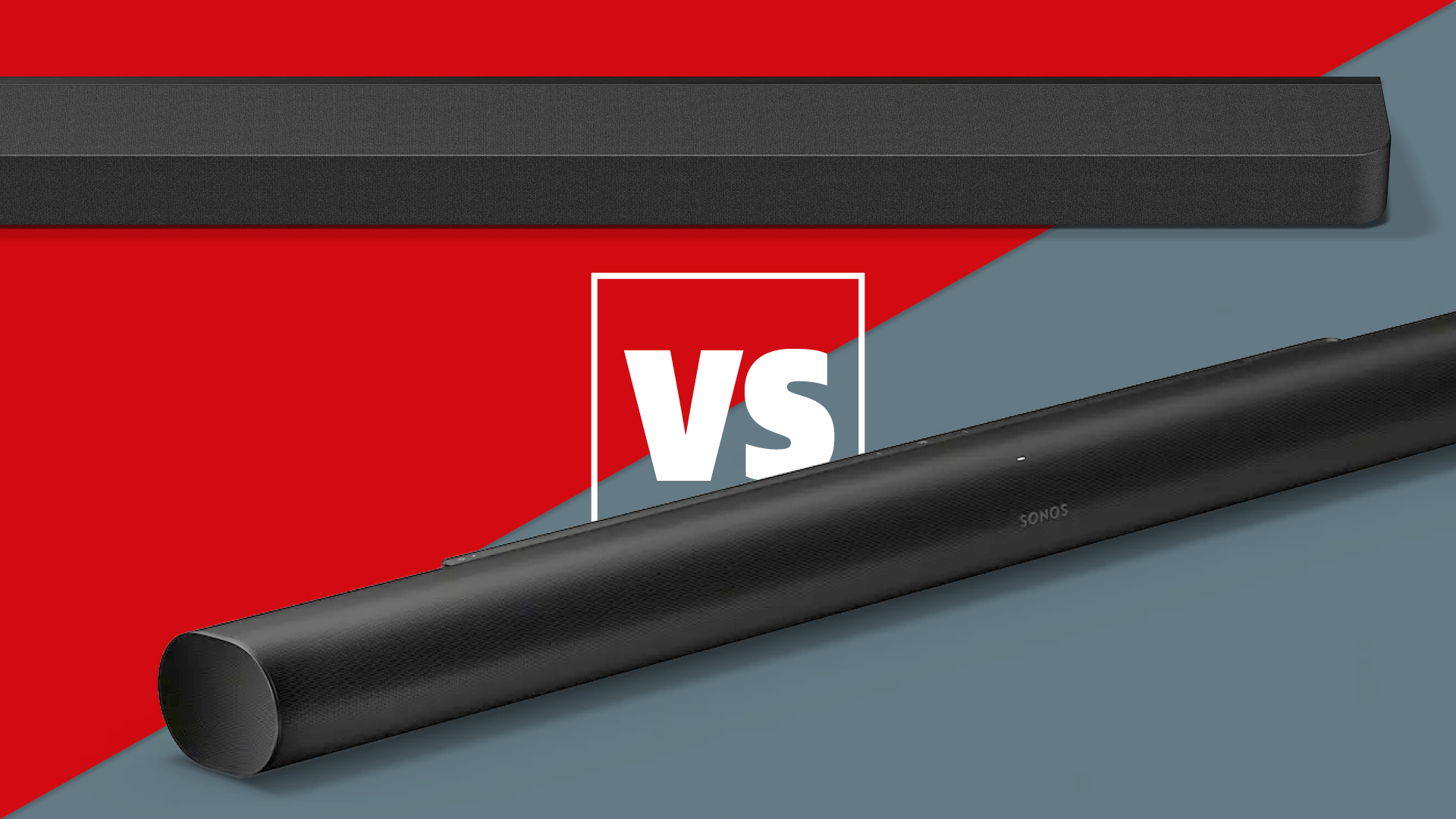
The Sony Bravia Theatre Bar 8 launched at £999 / $999 / AU$1499, while the Sonos Arc Ultra entered the market at £999 / $999 / AU$1799. Australian pricing aside, both soundbars are neck and neck in terms of their official RRPs.
It's worth noting that in the short lives of these soundbars, it's the Sony that has been more readily discounted, and it's the cheaper of the two at the time of writing. That’s not to say that Sonos’ offering isn’t immune to any future discounts, mind. We just aren’t aware of any at this particular moment.
You can see the latest, lowest prices below, but at this stage the Sony Bravia Theatre Bar 8 takes the win in this round.
** Winner: Sony Bravia Theatre Bar 8 **
Sony Bravia Theatre Bar 8 vs Sonos Arc Ultra: design and build
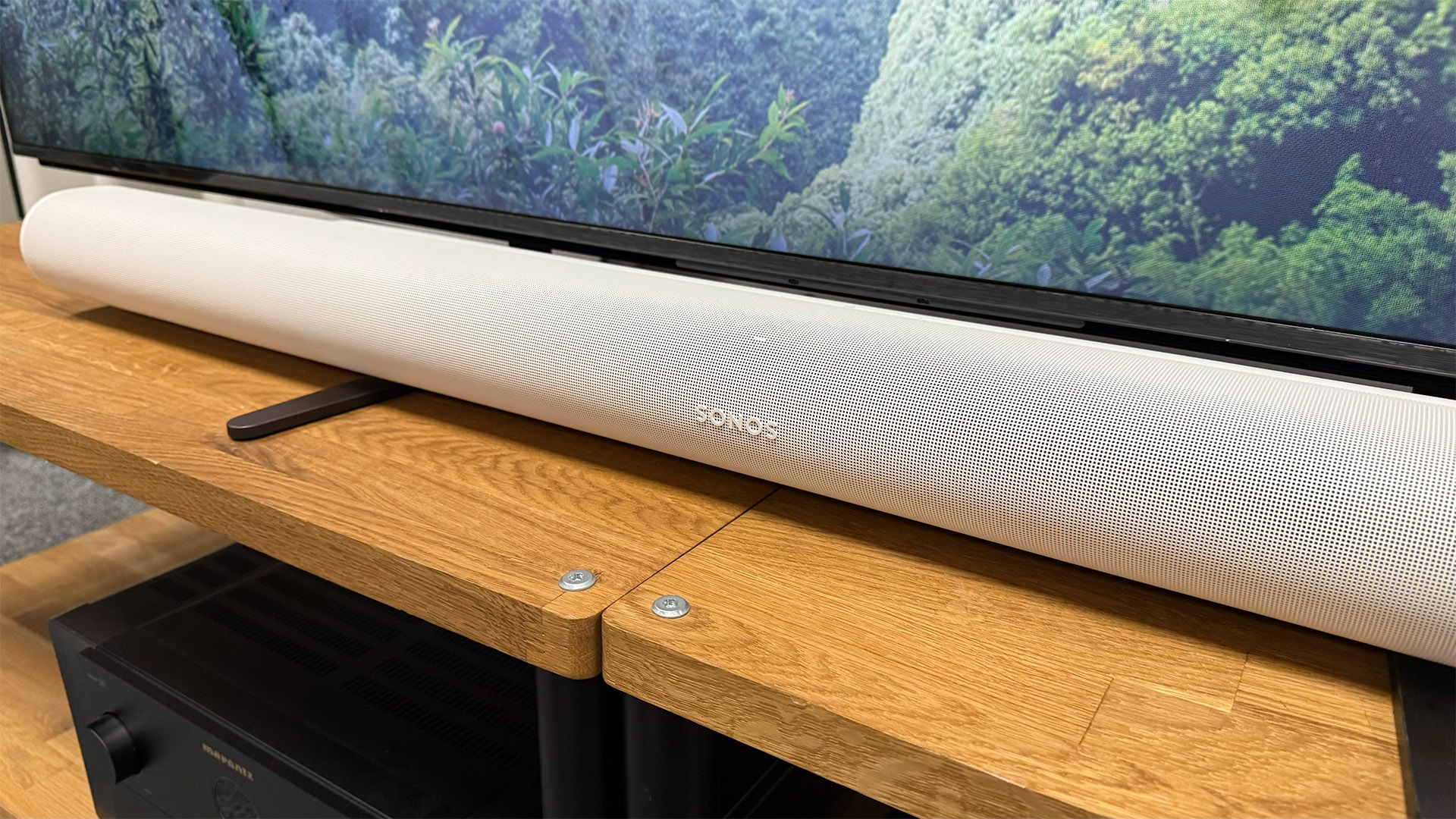
The Sony Bravia Theatre Bar 8 follows the same design language as its larger Theatre Bar 9 sibling, but in a more compact, 110cm body (compared to the Bar 9's 130cm length). At just 6.4cm tall, The Bar 8 is slim enough to sit in front of most TVs without obstructing the screen.
The bar itself features a fabric mesh covering almost all of its chassis, and its rounded corners give it a rather discreet appearance. Sony has kept the design clean to the point of minimalism – there's just one button and no display, which can occasionally be frustrating when checking basic information such as the current sound format.
The Sonos Arc Ultra, on the other hand, looks very similar to the company’s original Arc, bar some design refinements. It's slightly longer than the Sony, at 118cm, but still keeps a relatively low profile at 7.5cm tall.
The Arc Ultra also has a distinctive ledge at the rear top of the chassis that houses touch controls. One minor inconvenience is the Bluetooth pairing button, which is somewhat awkwardly hidden in the recess around the back alongside the HDMI and power ports.
Like the Sony, there's no display on the Sonos Arc Ultra.
Ultimately, both soundbars are visually appealing in their own right, with the Sony offering a more fabric-focused, soft appearance, and the Sonos presenting a more industrial, perforated metal aesthetic. The choice between them is largely a matter of personal preference, but neither one will offend.
** Winner: draw **
Sony Bravia Theatre Bar 8 vs Sonos Arc Ultra: features
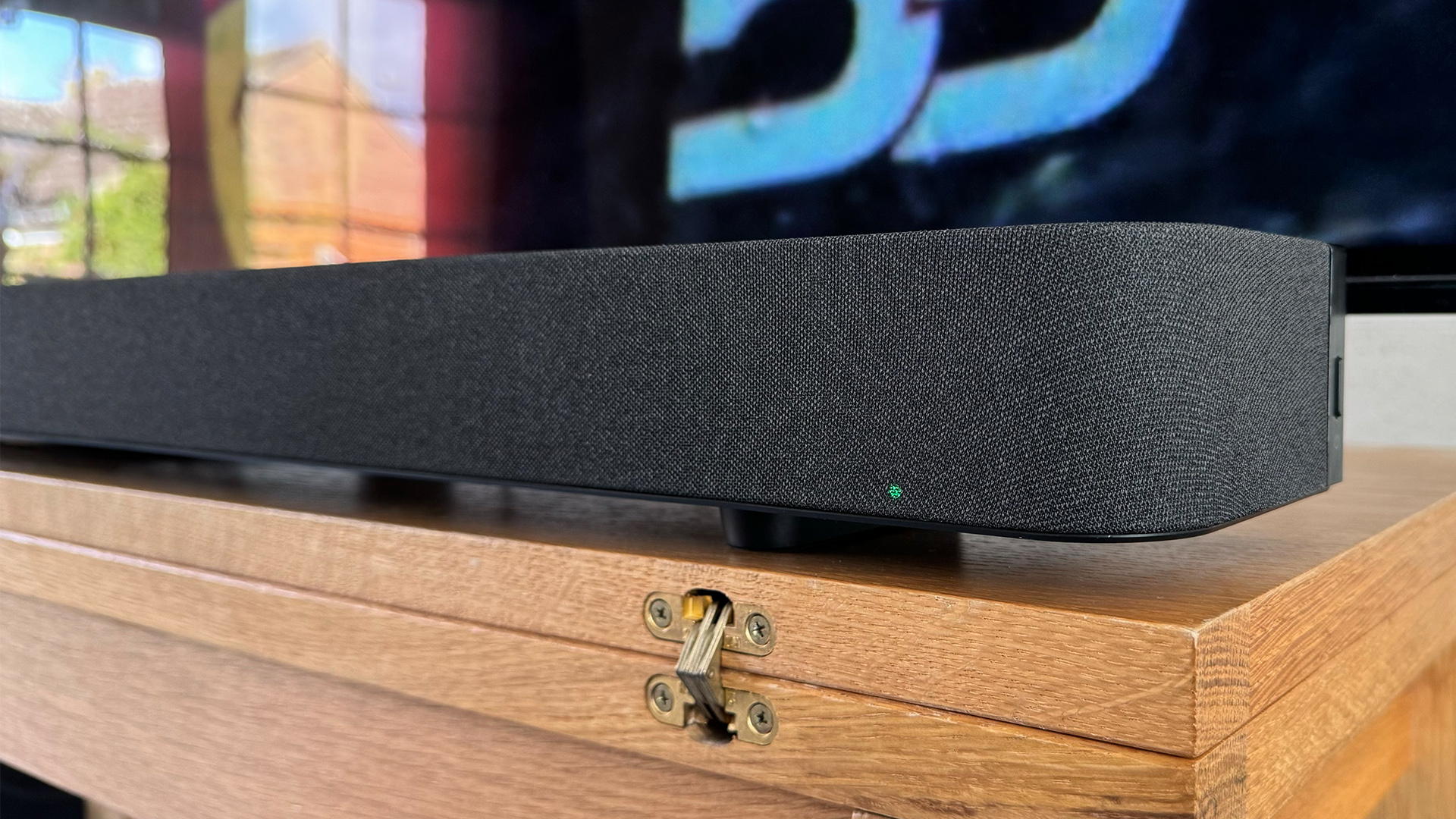
The Sony Bravia Theatre Bar 8 features 11 drivers – four woofers and three tweeters along the front, a side-firing midrange driver on each end, and two up-firing drivers on top.
It supports both Dolby Atmos and DTS:X, and will receive IMAX Enhanced support via a future software update (though this will require optional surround speakers and a subwoofer). It also comes with a Sound Field Optimisation process, which involves taking three measurements from the soundbar to optimise the audio for your room.
Connection-wise, the Sony includes an HDMI eARC port, plus a single HDMI input that supports 4K/120Hz, VRR, and ALLM – a significant advantage for gamers with precious few HDMI 2.1 sockets on their TV.
You can also stream music using Spotify Connect, AirPlay 2, or Bluetooth. The companion Bravia Connect app is excellent as well, with an intuitive layout and useful information.
The Sonos Arc Ultra, meanwhile packs a 9.1.4-channel configuration, with 15 Class D amplifiers powering 14 drivers – seven tweeters, six midrange woofers, and a 'Sound Motion' woofer.
This special Sound Motion driver uses four lightweight motors in opposing corners to push the cone, and produce what Sonos claims is double the bass of the original Arc. The Arc Ultra also features a new front-firing speaker array that improves the centre channel performance for clearer dialogue.
Unlike the Sony, the Arc Ultra doesn't support DTS (although Dolby Atmos is still on the cards), and it lacks any dedicated HDMI inputs, which could be problematic for those with multiple gaming devices.
However, it does offer Bluetooth connectivity (unlike the original Arc) and, in a Sonos first, the Trueplay calibration process is supported on Android phones as well as iOS.
The Arc Ultra is much better when it comes to music streaming, too, as it supports pretty much every service under the sun. It can also integrate seamlessly with other Sonos speakers for multi-room audio, or to create a more comprehensive surround system.
Still, for its HDMI passthrough feature and DTS support, it's the Sony that takes this round.
** Winner: Sony Bravia Theatre Bar 8 **
Sony Bravia Theatre Bar 8 vs Sonos Arc Ultra: sound

The Sony Bravia Theatre Bar 8 unfortunately has various shortcomings in the audio department, despite its tech specs. When testing with films such as Unbroken and Blade Runner 2049, for example, dynamics prove to be a major weakness.
The soundbar struggles with gradual builds essential for tension, responding primarily to only the largest volume jumps – even explosive-laden scenes in Unbroken come across as limp. Low-level dynamics are equally problematic – dialogue in Blade Runner 2049 sounds flat, lacking nuance and emotion, while character voices generally sound distant due to poor projection.
The Bar 8's soundstage, while improved with Sound Field Optimisation enabled, lacks the spaciousness and three-dimensionality of its competitors as well. While audio extends somewhat beyond the TV's boundaries, it fails to properly fill the room.
Complex soundtracks often sound competitive rather than harmonious, with the music in Blade Runner 2049 becoming cacophonous, rather than remaining controlled.
The soundbar isn't without merit, mind – it offers clean sound with precise timing and detail. And when provoked by significant dynamic shifts such as large explosions, it can deliver impact. Its bass, while not abundant, is generally well-controlled too, with only slight fuzziness during the most challenging low frequencies.
For music playback, the Bar 8 fares slightly better thanks to its neutral tonal balance and solid rhythmic precision, but dynamics remain lacking, vocals are recessed, and there's a coldness to the delivery that goes beyond clinical and drifts into somewhat soulless territory.
The Sonos Arc Ultra, on the other hand, represents a significant advancement over its excellent predecessor.
Testing with the same Blade Runner 2049 sequences reveals its impressive bass handling – with no driver chuffing even during the most challenging deep notes. The improvement isn't merely in bass quantity, but in quality – it's tight, tuneful and expressive in a way rarely found in soundbars.
Bass notes hit with greater force, stop more precisely, and show greater tonality and agility compared to the original Arc, which sounds relatively leaden and one-dimensional by comparison.
Spatial performance is equally impressive. In Bladerunner 2049, the interrogator's voice genuinely appears to come from above, while audio advertisements outside an apartment building seem to emanate from the top-right and top-left of the room.
Subtle details such as footsteps, a tooth being placed on a glass table, and the soft squeak of a rubber surgical gown are all delivered clearly but naturally, contributing to the atmosphere without distracting.
The Arc Ultra's low-level dynamic subtlety ensures these details are presented realistically, while at the other end of the spectrum, it handles grand volume changes effortlessly and can reach impressive volumes.
For music playback, the Arc Ultra further solidifies Sonos's reputation for musical soundbars. When playing Tool's Invincible, it demonstrates excellent precision, crispness, and tightness.
The increased precision helps maintain organisation – both rhythmically and spatially – even during complex passages, resulting in a more energetic, exciting and engaging performance.
All told, this round goes to the Sonos, and by quite some margin.
** Winner: Sonos Arc Ultra **
Sony Bravia Theatre Bar 8 vs Sonos Arc Ultra: verdict
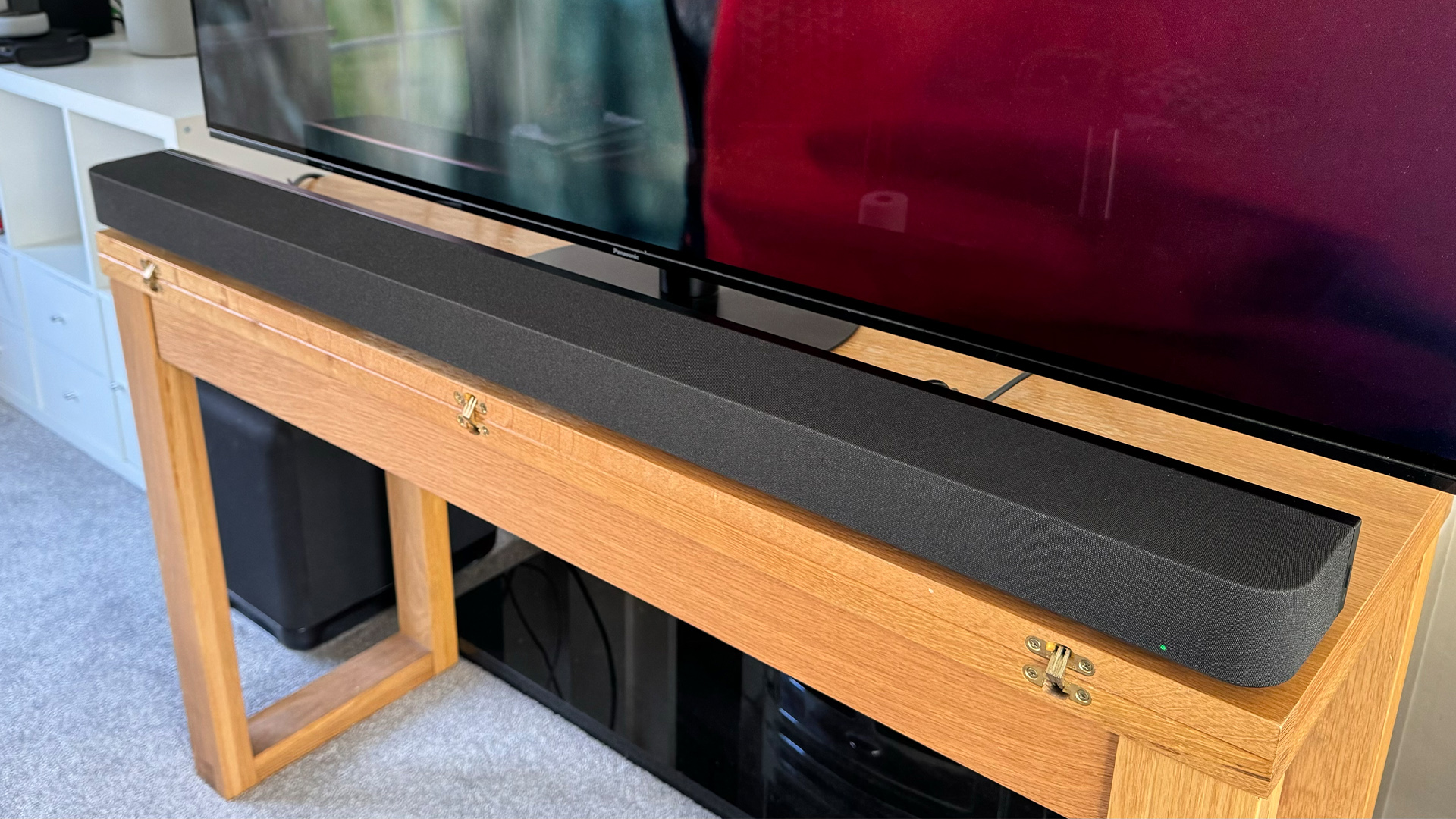
While the Sony Bravia Theatre Bar 8 has some advantages – particularly its HDMI passthrough port with gaming-friendly features, DTS:X support, and occasionally discounted price – it falls short where it matters most – sound quality.
The Sonos Arc Ultra delivers a significantly more impressive audio performance, with better dynamics, more convincing spatial audio, superior bass response, and a more engaging overall presentation.
Its lack of HDMI inputs and DTS support will be genuine drawbacks for some people, but they're outweighed by its sonic capabilities.
Even if you're primarily concerned with gaming connectivity or if DTS support is essential for your media library, the Bar 8 isn't really worth considering.
Instead, we suggest you either save a bit more money for the Sony Bravia Theatre Bar 9 or accept those slight specification compromises for the Sonos Arc Ultra's vastly better audio performance.
** Overall winner: Sonos Arc Ultra **
MORE:
Which Sonos speaker should you buy? Find out here
Check out the best Dolby Atmos soundbars
Read our Sonos Ace review







